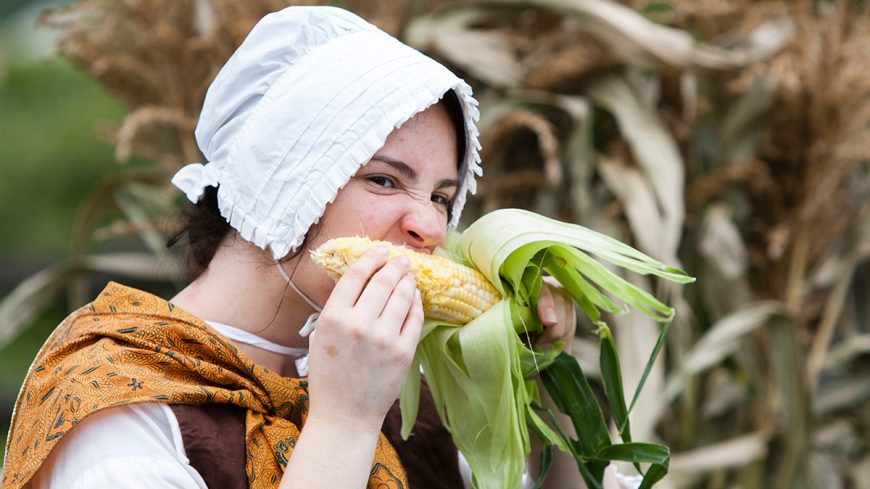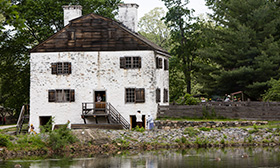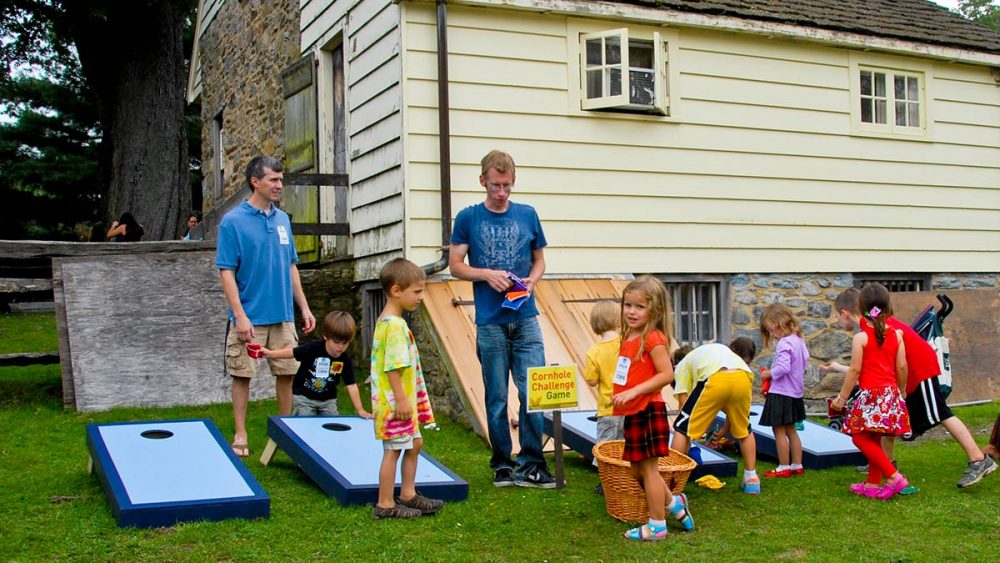What is CORNucopia?

CORNucopia is a festival at Philipsburg Manor celebrating the importance of corn and its heritage in America.
Corn has been grown in the Hudson Valley for hundreds of years. On his trip up the river that now bears his name, Henry Hudson visited a native dwelling that he later described as containing “a great quantity of maize or Indian corn, and beans of last year’s growth, and there lay near the house for the purpose of drying enough to load three ships, besides what was growing in the fields.”
At the time when the Philipses acquired their northern Westchester property in the 1680s, the most fertile acreage had been cultivated for maize by the native Lenape.
The Lenape, like many Eastern Woodland tribes, practiced a system of companion planting. Corn was one of the “Three Sisters,” a group of mutually sustaining crops best grown together. Planted together, the corn’s stalks serve as bean poles, beans enrich the soil with much-needed nitrogen, and the leaves of the low-growing squash shade the ground, preserving moisture, preventing weeds, and deterring pests. The Three Sisters were so important to native diets that crops attained mythical status among some tribes, most notably the Iroquois.
The residents of Philipsburg Manor, Upper Mills circa 1750 used corn in a number of different ways. Dried corn was suitable for animal feed. Once ground, however, corn could be turned into a variety of delicacies including corn pudding and Johnny cakes. The gristmill at Philipsburg Manor, which could produce 15 tons of flour a week, was used to grind corn into meal. Cornmeal mush was the key component of the enslaved Africans’ diet, and dried corn husks served as stuffing for their sleeping palettes.
Today, there are over 500 different uses for corn. You can eat it off the cob, in soups, as hominy (corn kernels processed to remove their germ and their hull), and in cornbread, muffins, breakfast cereal, marshmallows, and even ice cream. Corn is also used in plastics, as packing material, and in fuel, adhesives, paint, solvents, soaps, antifreeze, insulation, and clothing!
And, did you know that corn is even featured on U.S. currency? The reverse of the Sacagawea Dollar coin minted in 2009 features a Native American woman planting squash and beans around stalks of corn.











